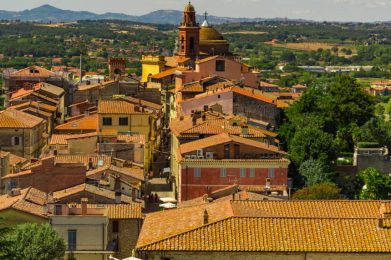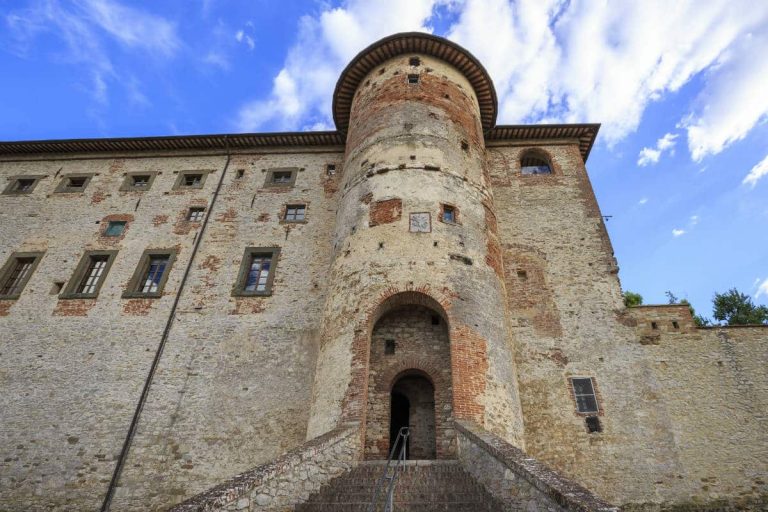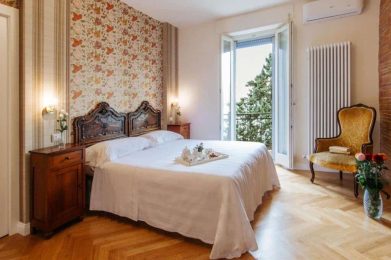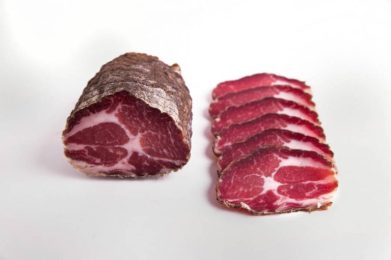The Palazzo della Corgna, also known as Palazzo Ducale is located close to the Rocca del Leone and was the main residence of the della Corgna who ruled from 1563 to 1647, the Marquisate of Castiglione del Lago, then Duchy from 1617. Conceived as a small “Reggia”, was separated from the country and surrounded by a flourishing garden.
The palazzo, in the shape of a elle, was articulated in four elevations: private premises, stables and underground; Input, kitchens and drawings; piano nobile, with the apartment of the marquis, and accommodations for the staff. The main entrance, was accessed by two staircases, was located in the forepart: on the back, with view on the lake Trasimeno, opened a second access content in a tower.
The right side of the building was characterized by three theories of windows, where those larger central and corresponded to the room of the secretary of the Court, the lieutenant and of the throne or study of the marquis: a secret door of the latter informed with a covered walkway, with slots on the lake, which led to the Rocca del Leone and could be used as a way of escape, in case of impending danger.
The apartment of the duke of Castiglione del Lago was located between the basement and the piano nobile. Here were prepared the three so-called secret rooms (under the throne room), in which especially the marchesi Diomedes and Ascanio II organized private meetings, much sought-after, with the most famous artists and scholars Perugini.
The village of Castiglione del Lago was designed taking account of esoteric symbolism of the number 3 (3 controls the universe and is the most magical and powerful), according to a custom diffused in the architecture and urbanism of the time: three doors, three churches.
The urban structure of the country it was alleged on an essential the concordance of the number three, precisely, that rievocava the Holy Trinity and reflected the social division of the period, characterized by the clergy, nobles and peasants. The religious buildings were three (La Maddalena, San Domenico and Sant’Agostino), the Rocca del Leone was triangular, arteries borghigiane equally three, then reduced to two and three of the access doors: Porta Perugina that led to the palazzo marchionale and equipped castle, Senese Gate leading to the center of the country in which it is elevated the Torre del Popolo, original municipal seat, and Porta Fiorentina, from Trasimeno Lake, and still single carriage road.
cooplagodarte94@gmail.com




